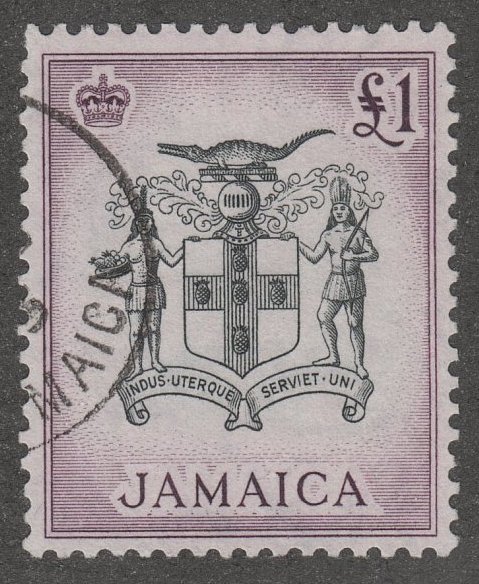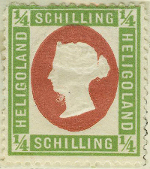
Discussion - Member to Member Sales - Research Center

Discussion - Member to Member Sales - Research Center

I collect many different countries and almost all of them have places for both common and litho stamps and have know idea on how to identify the litho ones please can some one help
Thanks to every one
mac

Login to Like
this post
Common stamps are not defined by the printing process that created them, but by their abundance. Common stamps are stamps that you frequently encounter. They usually have minimum catalogue value.
Lithographed stamps, which may be rare or common or in between, may be identified by the smoothness of the image. Essentially, broad, flat areas of ink is transferred to paper from a printing plate, leaving broad, flat areas of ink on the stamp. If you lightly brush a clean fingertip across the face of a lithographed stamp, it will feel smooth. Not smooth like plastic or glass, but there will be no obvious ridges or bumps.
Engraved (Intaglio) stamps, which may be common or rare or in between, are created by the ink left in the grooves and dots that are cut into a metal plate. The ink is transferred to the paper; because it is viscous, it doesn't bleed or run, and dries just where and as it was left. If you run your fingertip across an engraved stamp, you will feel a distinct roughness.
I'm not an expert in printing methods (of which there are many, these days), but I'm fairly confident that my statements are correct. The Scott catalogues have a section at the beginning that explains different types of printing processes.
Bob

1 Member
likes this post.
Login to Like.
Mac, common defines a stamp's availability; lithography is a printing process. A stamp may be both, either, or neither.
Bob is correct, although I might more concretely differentiate between the grooves of engraved stamps and dots of intaglio; the former is created by hand; the latter by computer.
Lithographed stamps will be smooth to the touch, and the ink will apppear continuous (not the dots of intaglio) under magnification (unless it's designed to appear broken).
Many stamps are produced in combination of printing types, so it's possible to have engraved and lithographed processes used on the same stamp.
Hope this helps
David

Login to Like
this post
I'm wondering about the dots of intaglio: created by computer?
I'm not an expert but the intaglio process, I think, predates computer printing by centuries.
I have some old trade cards printed in the 1800s and when examined with a magnifier, the designs are series of colored dots from lithographic printing.
I seem to recall that it's the shape of the dots which determine if something was printed with a computer. I could be dreaming all this though.
Bruce

Login to Like
this post

05:23:20pm
One of the most popular modern series to collect is the British Machin Head series of Queen Elizabeth II. In the almost 45 five years since their introduction in 1967 there are over 400 easy to sort color/value varieties. When a few, easy to see with the naked eye, printing and phosphor varieties are also considered that number rises to almost 1,000 different stamps, all with the same Queen's profile.
One of the fairly easy to see differences is between Photo Gravure examples and Lithographic specimens.
We do that by looking at the area where the value, in white, meets the color of the rest of the stamp.
Photogravure will have a raggety edge.
Lithographed stamps will have a relatively sharp border.( This can also be seen around the edges of the design where the color meets the unprinted border.)
Engraved examples, as mentioned by others, have a raised surface where the paper was pressed into the grooves of the engraved plate during the printing process.
If any reader wants to send me a note with their address I would be happy to send them several (Identified) Machin Head stamps where those differences can be easily seen.
Once the differences are seen either with sharp young eyes or a small magnifier that knowledge can be applied to the rest of philately.
(Message edited by cdj1122 on November 30, 2010)

Login to Like
this post
Thankyou for this post and any future help is appreciated Cheryl

Login to Like
this post
12:41:12pm
Hello every one
I collect many different countries and almost all of them have places for both common and litho stamps and have know idea on how to identify the litho ones please can some one help
Thanks to every one
mac

Login to Like
this post

re: Lithography, PhotoGravure, Intaglio
Common stamps are not defined by the printing process that created them, but by their abundance. Common stamps are stamps that you frequently encounter. They usually have minimum catalogue value.
Lithographed stamps, which may be rare or common or in between, may be identified by the smoothness of the image. Essentially, broad, flat areas of ink is transferred to paper from a printing plate, leaving broad, flat areas of ink on the stamp. If you lightly brush a clean fingertip across the face of a lithographed stamp, it will feel smooth. Not smooth like plastic or glass, but there will be no obvious ridges or bumps.
Engraved (Intaglio) stamps, which may be common or rare or in between, are created by the ink left in the grooves and dots that are cut into a metal plate. The ink is transferred to the paper; because it is viscous, it doesn't bleed or run, and dries just where and as it was left. If you run your fingertip across an engraved stamp, you will feel a distinct roughness.
I'm not an expert in printing methods (of which there are many, these days), but I'm fairly confident that my statements are correct. The Scott catalogues have a section at the beginning that explains different types of printing processes.
Bob

1 Member
likes this post.
Login to Like.
Auctions
re: Lithography, PhotoGravure, Intaglio
Mac, common defines a stamp's availability; lithography is a printing process. A stamp may be both, either, or neither.
Bob is correct, although I might more concretely differentiate between the grooves of engraved stamps and dots of intaglio; the former is created by hand; the latter by computer.
Lithographed stamps will be smooth to the touch, and the ink will apppear continuous (not the dots of intaglio) under magnification (unless it's designed to appear broken).
Many stamps are produced in combination of printing types, so it's possible to have engraved and lithographed processes used on the same stamp.
Hope this helps
David

Login to Like
this post
04:30:15pm
re: Lithography, PhotoGravure, Intaglio
I'm wondering about the dots of intaglio: created by computer?
I'm not an expert but the intaglio process, I think, predates computer printing by centuries.
I have some old trade cards printed in the 1800s and when examined with a magnifier, the designs are series of colored dots from lithographic printing.
I seem to recall that it's the shape of the dots which determine if something was printed with a computer. I could be dreaming all this though.
Bruce

Login to Like
this post
Silence in the face of adversity is the father of complicity and collusion, the first cousins of conspiracy..
30 Nov 2010
05:23:20pm
re: Lithography, PhotoGravure, Intaglio
One of the most popular modern series to collect is the British Machin Head series of Queen Elizabeth II. In the almost 45 five years since their introduction in 1967 there are over 400 easy to sort color/value varieties. When a few, easy to see with the naked eye, printing and phosphor varieties are also considered that number rises to almost 1,000 different stamps, all with the same Queen's profile.
One of the fairly easy to see differences is between Photo Gravure examples and Lithographic specimens.
We do that by looking at the area where the value, in white, meets the color of the rest of the stamp.
Photogravure will have a raggety edge.
Lithographed stamps will have a relatively sharp border.( This can also be seen around the edges of the design where the color meets the unprinted border.)
Engraved examples, as mentioned by others, have a raised surface where the paper was pressed into the grooves of the engraved plate during the printing process.
If any reader wants to send me a note with their address I would be happy to send them several (Identified) Machin Head stamps where those differences can be easily seen.
Once the differences are seen either with sharp young eyes or a small magnifier that knowledge can be applied to the rest of philately.
(Message edited by cdj1122 on November 30, 2010)

Login to Like
this post
02:29:26pm
re: Lithography, PhotoGravure, Intaglio
Thankyou for this post and any future help is appreciated Cheryl

Login to Like
this post

